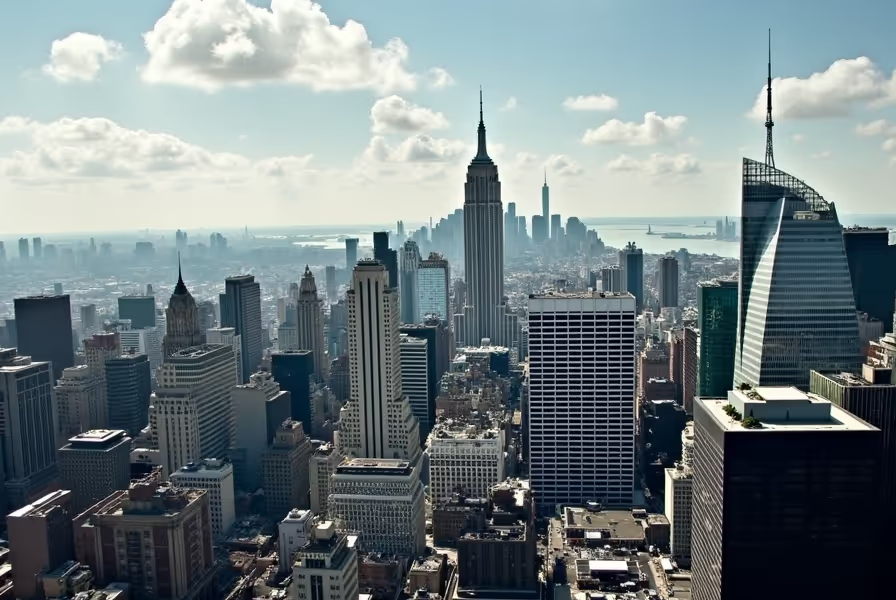Tracing the Origins of America’s Most Iconic City
New York City, often called the “Capital of the World,” has a rich and layered history. Every street, landmark, and borough tells a story. As one of the oldest cities in the United States, NYC has evolved from a small Dutch settlement to a global economic and cultural powerhouse. Whether you're a history buff, traveler, or NYC resident, understanding its past helps you appreciate its present identity.
The Early Inhabitants and the Land Before Colonization
Long before skyscrapers and subways, the area we now know as New York City was home to the Lenape people. These Native Americans were part of the Algonquian language family and lived in small villages across present-day Manhattan, Brooklyn, Queens, and the Bronx.
- They called the area “Lenapehoking,” meaning "land of the Lenape."
- Their society revolved around fishing, hunting, and corn agriculture.
- The waterways were central to transportation and trade across the region.
The Arrival of European Colonists in the 1600s
In 1609, English explorer Henry Hudson sailed up what would later be called the Hudson River, under the Dutch East India Company. By 1624, the Dutch established a small trading post on the southern tip of Manhattan, naming it New Amsterdam.
- New Amsterdam was part of the larger New Netherland colony.
- It became a major fur trading center between the Dutch and Native Americans.
- In 1626, Peter Minuit is said to have purchased Manhattan for trade goods worth 60 guilders.
Transformation Under British Rule
In 1664, the British claimed New Amsterdam without firing a shot. The city was renamed New York after the Duke of York, the brother of King Charles II.
- The British expanded the city’s trade, shipping, and population.
- The grid system of streets began forming in lower Manhattan.
- By the 1700s, New York was already becoming a vital colonial port.
New York City and the American Revolution
New York played a critical role in the Revolutionary War. Its strategic harbor and location made it a coveted site for both British and American forces.
- In 1776, George Washington lost the Battle of Long Island and retreated to New Jersey.
- The city became the British military base until the end of the war in 1783.
- After the war, it briefly served as the first capital of the United States from 1789 to 1790.
Growth Through the 19th Century
The 1800s marked explosive growth for NYC. With the opening of the Erie Canal in 1825, New York became the gateway for goods moving west and for immigrants arriving from Europe.
- Ellis Island opened in 1892 as the nation's busiest immigrant inspection station.
- The Statue of Liberty was gifted by France in 1886 as a symbol of freedom and welcome.
- Industrialization brought jobs, transit systems, and population booms.
This century also saw the consolidation of New York's five boroughs in 1898: Manhattan, Brooklyn, Queens, The Bronx, and Staten Island. This unified city framework exists today.
20th Century: The Rise of a Global City
New York City stepped into the 20th century as a booming metropolis. It became synonymous with finance, media, arts, and culture.
- Wall Street emerged as the heart of global finance.
- The Harlem Renaissance brought Black artists, writers, and musicians into the spotlight during the 1920s.
- Major infrastructure like the subway (opened in 1904) and skyscrapers reshaped the skyline.
New York also endured countless challenges. The Great Depression, two World Wars, urban decline in the 1970s, and the September 11 attacks in 2001 each tested the city's resilience.
21st Century NYC: Transformation, Diversity, and Technology
Today, NYC is known for its unmatched diversity and innovation. Over 8 million residents speak more than 200 languages. It's still a hub for global finance, fashion, media, and education.
- Tech companies have turned NYC into “Silicon Alley.”
- Urban parks like the High Line and green energy projects show modern urban planning at work.
- Tourism, real estate, and cultural institutions continue to drive growth.
Impact of New York City on American Culture and Identity
From Broadway to Wall Street to hip-hop, NYC shapes America’s cultural and economic landscape. It is a symbol of resilience, opportunity, and innovation.
Its neighborhoods reflect global heritage. Chinatown, Little Italy, Harlem, and Jackson Heights each add to the city’s distinctive cultural fabric.
Frequently Asked Questions About the History of New York City
When was New York City founded?
New York City was originally founded as New Amsterdam by the Dutch in 1624. It was renamed New York in 1664 after the English took control.
Why did the Dutch settle in New York?
The Dutch settled in present-day New York to establish a trading post. They were interested in the fur trade and built alliances with Native American tribes in the region.
Was New York City ever the capital of the USA?
Yes, NYC served as the first capital of the United States from 1789 to 1790 before the capital moved to Philadelphia and then to Washington, D.C.
What are some key historical events in New York City?
Important events include the arrival of the Dutch in 1624, the British takeover in 1664, the Battle of Long Island in 1776, the 9/11 attacks in 2001, and hosting two World's Fairs in the 20th century.
What was New York City’s most important role in U.S. history?
New York City played a central role in immigration, finance, culture, and politics. Its port opened doors for millions, and its economic power helped shape the nation’s growth.










.svg)



